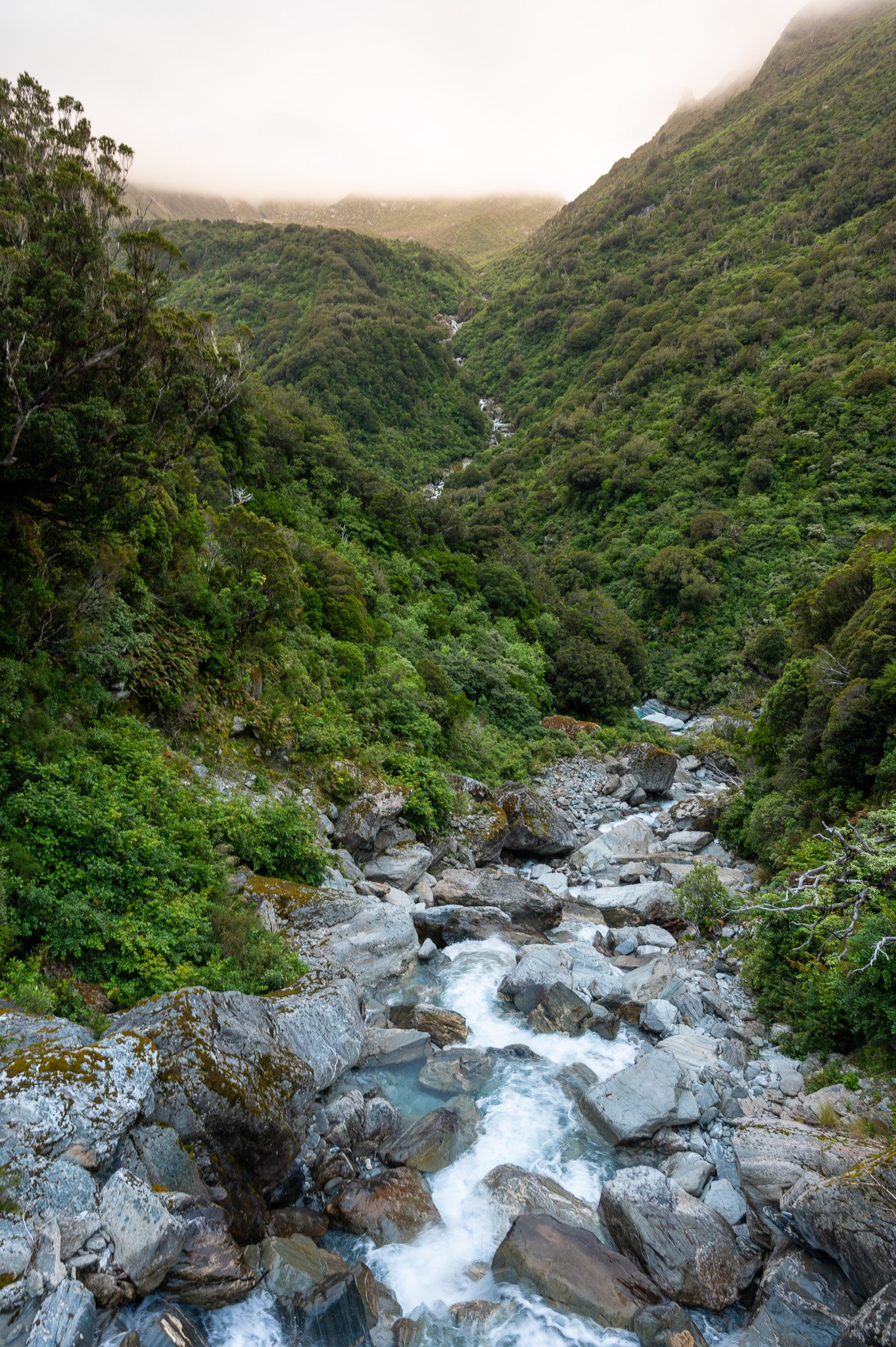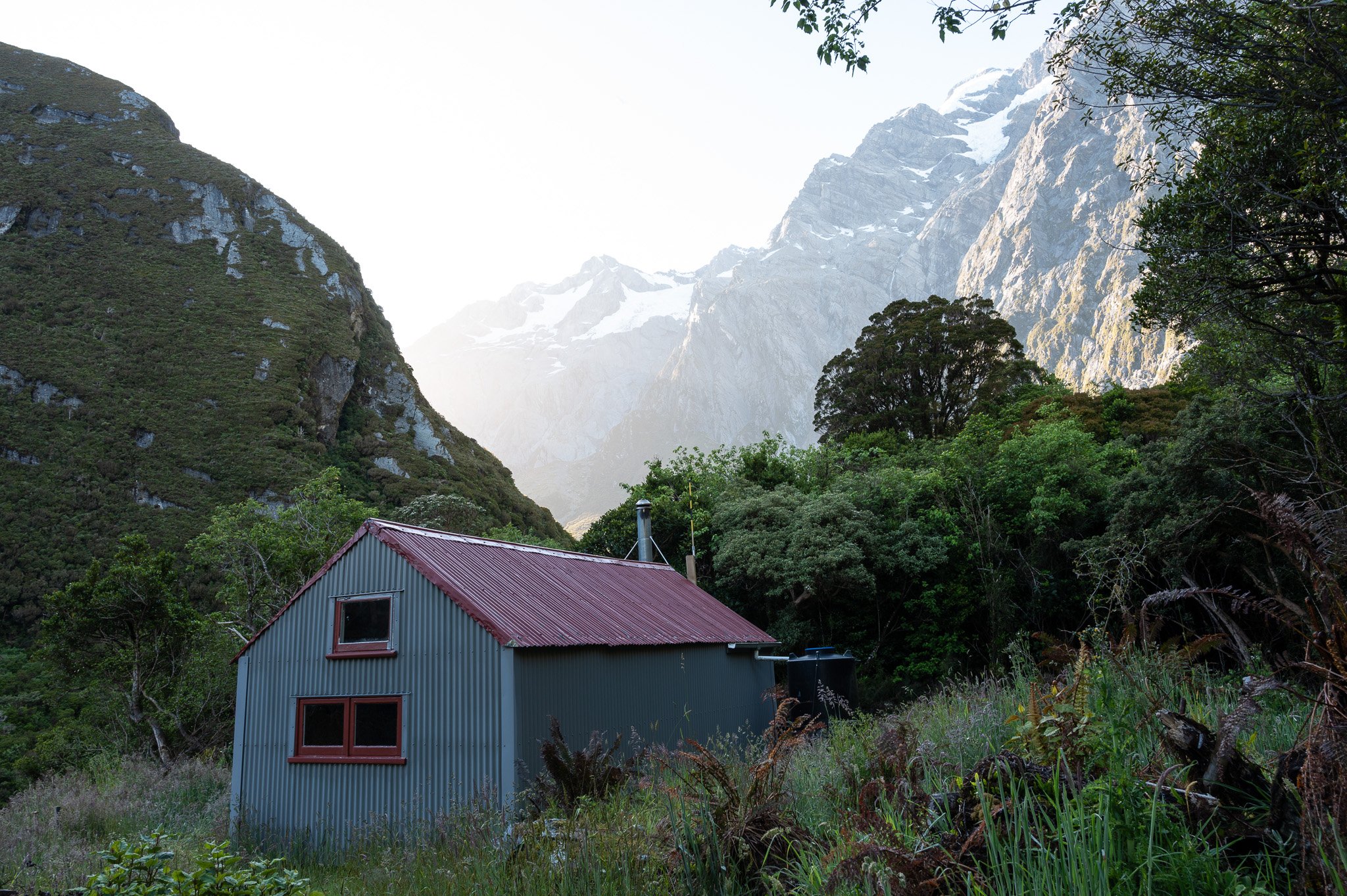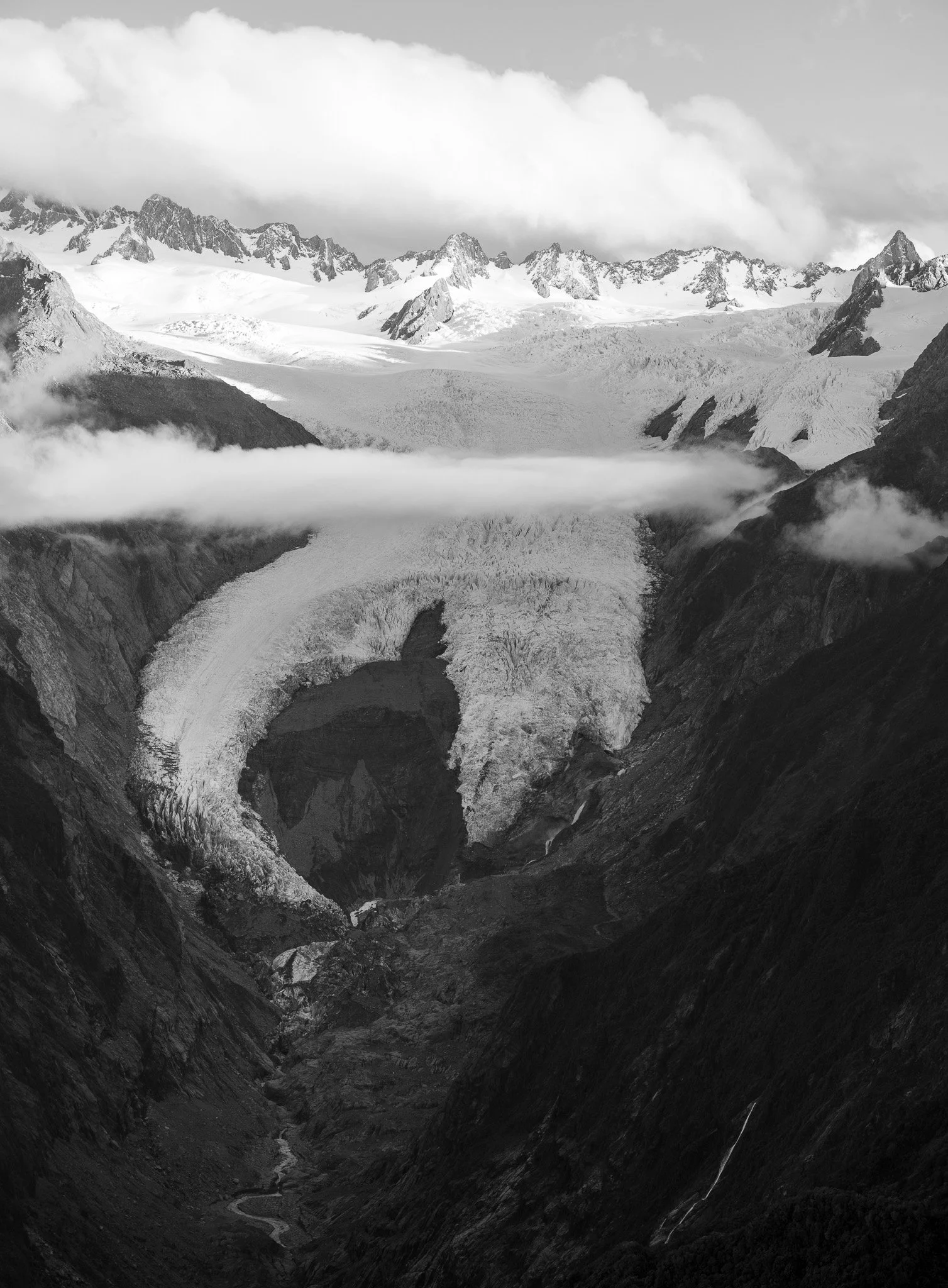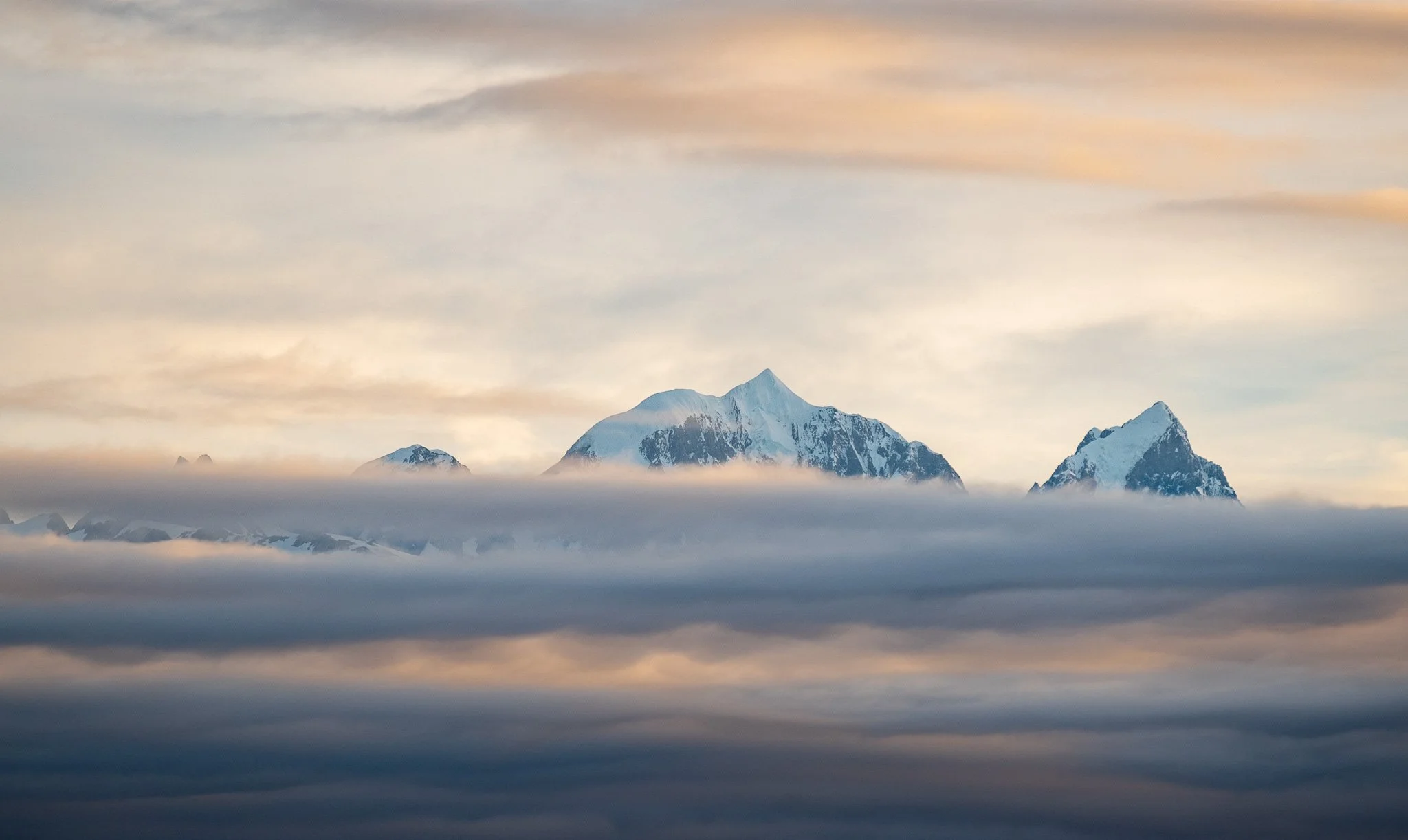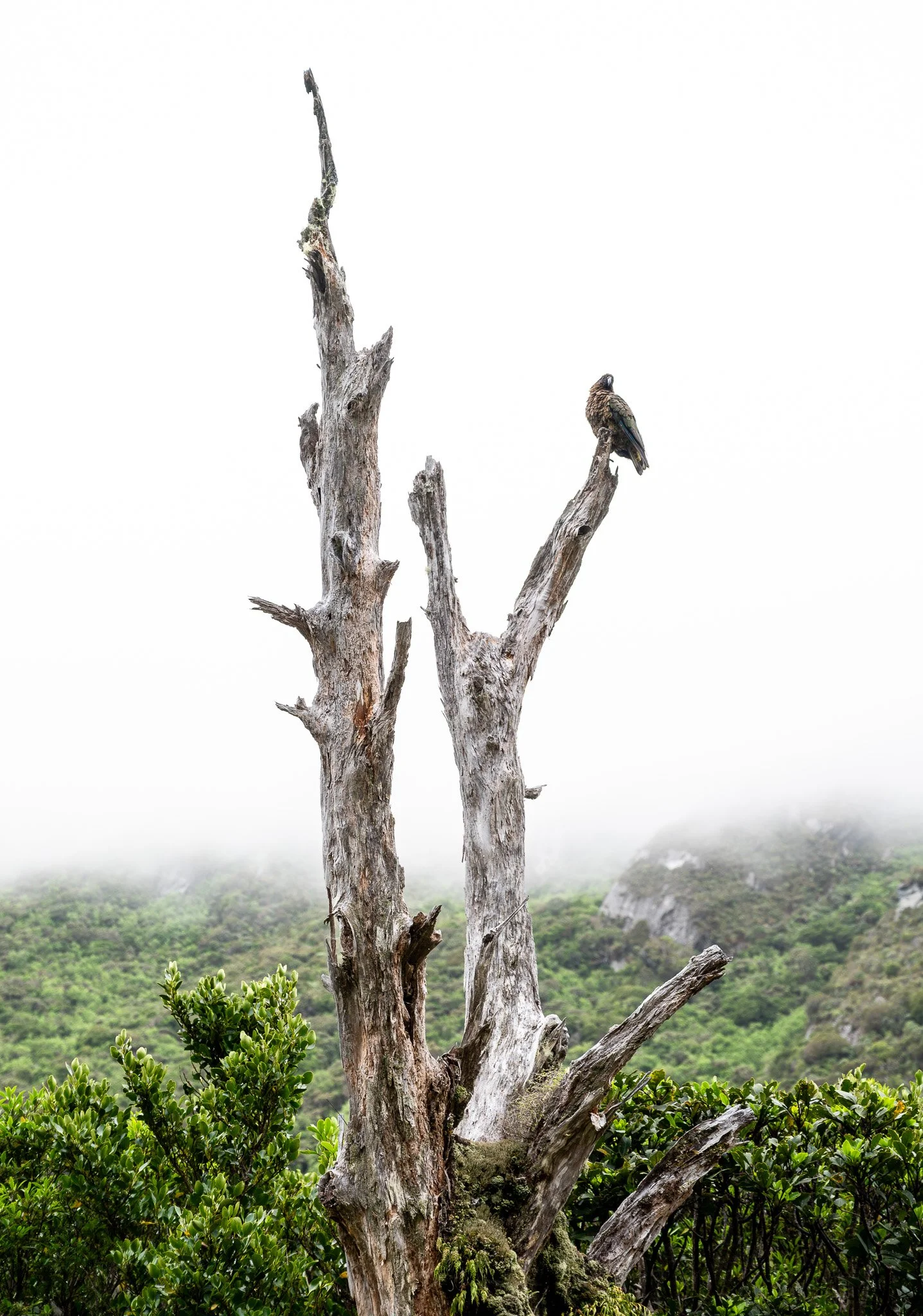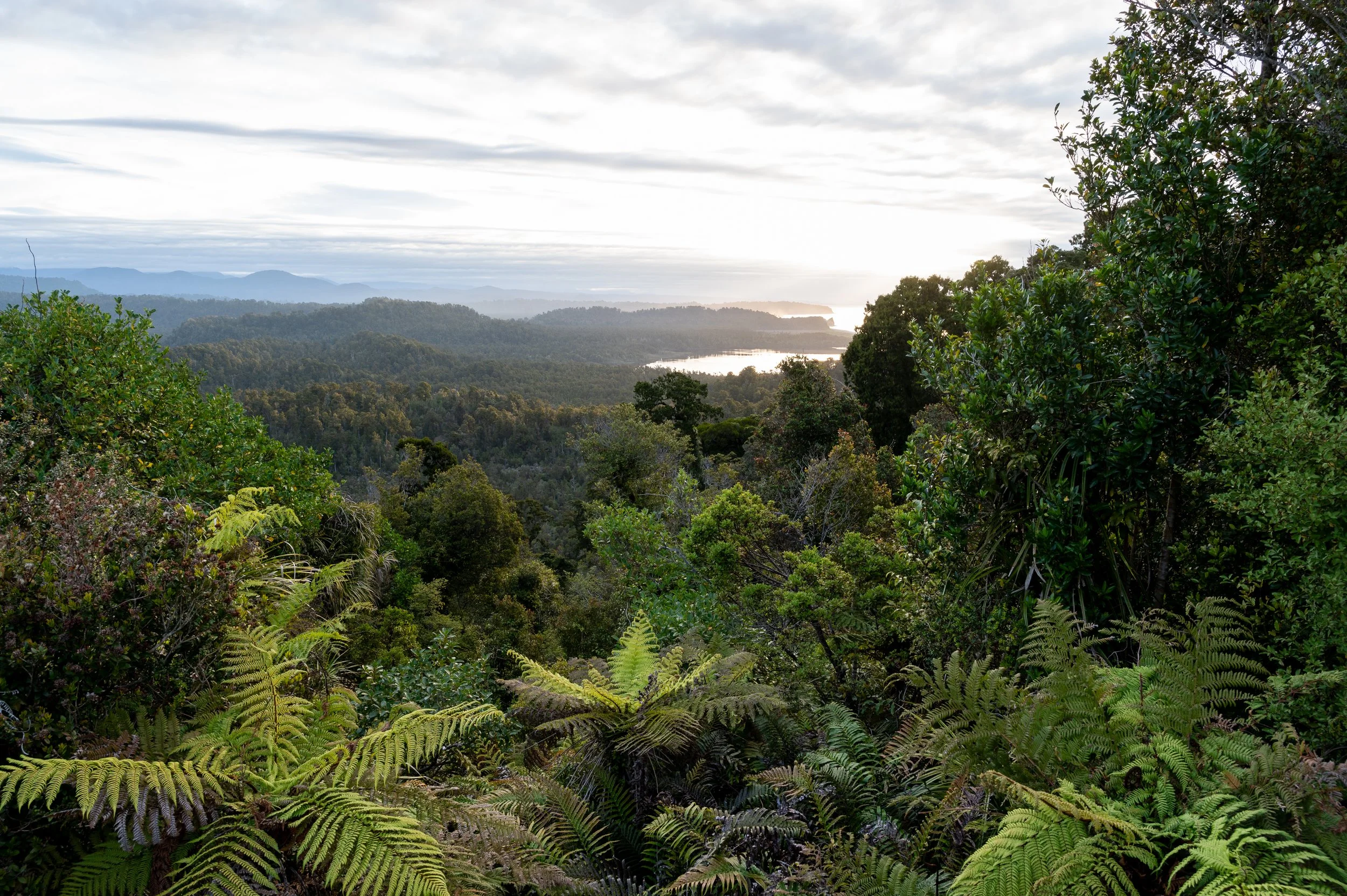Westland Tai Poutini National Park
Westland Tai Poutini National Park, possesses striking glaciers, dense rainforests, and dramatic alpine scenery. Spanning over 1,175 square kilometres, the park forms part of the Te Wahipounamu UNESCO World Heritage Site. The Southern Alps, rise abruptly from the coastline, offering a stark contrast between the snow-capped peaks and the lush greenery below…
-
The park's famous Franz Josef and Fox Glaciers flow from high altitudes down into the temperate rainforest, creating a unique and dynamic landscape. The rich rainforests, with their ancient trees, ferns, and mosses, support diverse wildlife.
Westland Tai Poutini's ecosystems range from coastal wetlands and dune systems to montane and subalpine environments. The lowland forests are dominated by towering rimu, kahikatea, and totara trees, which provide critical habitat for native birds like the New Zealand pigeon (kererū) and the bellbird (korimako). The subalpine shrublands and alpine tussock fields host unique flora such as the South Island edelweiss and alpine buttercups, adapted to the harsh, wind-swept conditions. These diverse ecosystems are interconnected by rivers teeming with native fish and invertebrates and are crucial for maintaining the ecological balance and supporting the park’s rich biodiversity.
Copland River flowing over the lush temperate forest of the West Coast.
Douglas Rock Hut was perhaps the most special hut we have stumbled upon in New Zealand.
Franz Josef Glacier, It's one of the few glaciers in the world that descends into a temperate rainforest. Photo taken from Alex Knob lookout.
Aoraki/Mount Cook from the West Coast.
Mighty kea, a lone guardian was waiting our approach to Douglas Rock Hut as if greeting us.
Fox Glacier, another example of a valley glacier, flowing through a U-shaped valley that it has carved out over thousands of years of retreat.
West Coast's Westland Tai Poutini's National Park is something else, consisting of wetlands and dune systems to montane and subalpine environments.


